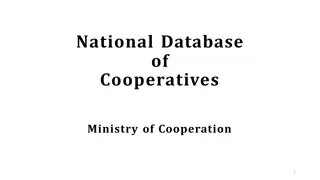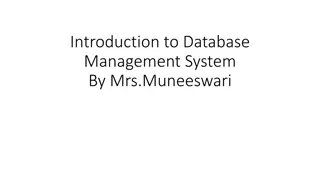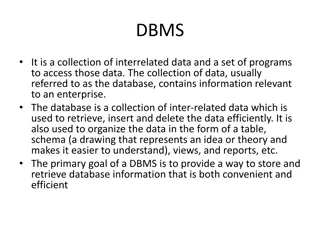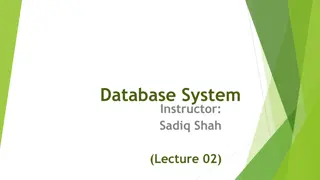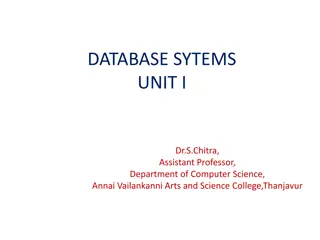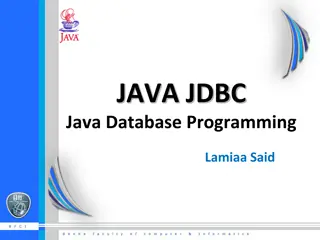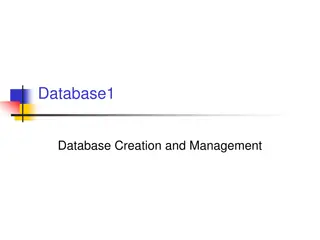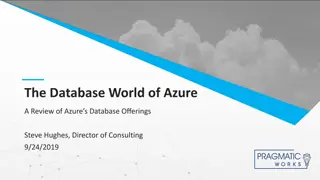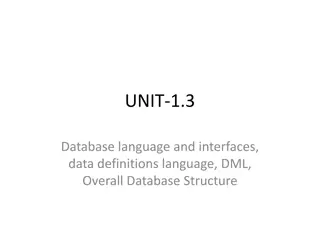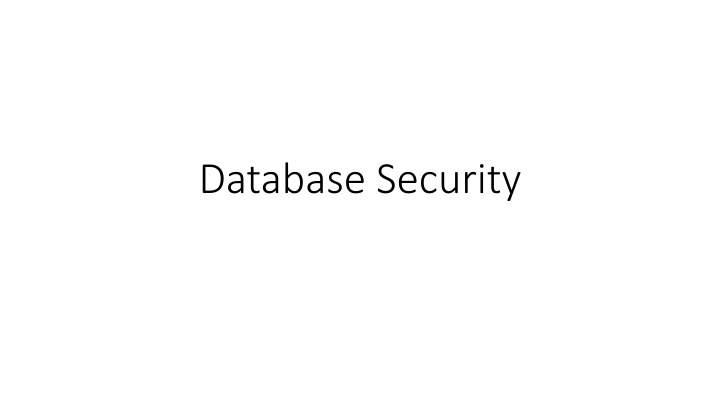
Database Security and Information Systems Overview
Enhance your understanding of database security and information systems through insights on security measures, responsibilities, and information system components. Learn about securing data, enforcing policies, and safeguarding against security violations and attacks. Dive into the world of information systems, client-server architecture, and database management essentials for the success of your information system.
Uploaded on | 1 Views
Download Presentation

Please find below an Image/Link to download the presentation.
The content on the website is provided AS IS for your information and personal use only. It may not be sold, licensed, or shared on other websites without obtaining consent from the author. If you encounter any issues during the download, it is possible that the publisher has removed the file from their server.
You are allowed to download the files provided on this website for personal or commercial use, subject to the condition that they are used lawfully. All files are the property of their respective owners.
The content on the website is provided AS IS for your information and personal use only. It may not be sold, licensed, or shared on other websites without obtaining consent from the author.
E N D
Presentation Transcript
Introduction Security violations and attacks are increasing globally at an annual average rate of 20%. You serve as a database administrator to enforce security policies. Responsibilities can be: Design and implement a new DB security policy. Enforce a stringent security policy. Implement functional specification of a module, i.e. encrypt the stored data, replace sensitive data using the data masking pack.
Database Security Security measures Prevent physical access to the servers where the data resided. Operating systems require authentication of the identity of computer users. Implement security models that enforce security measures. DBA should manage databases and implement security policies to protect the data (assets)
Security Database security: degree to which data is fully protected from tampering or unauthorized acts. Comprises information system and information security concepts
Information Systems Wise decisions require: Accurate and timely information Information integrity Information system: comprised of components working together to produce and generate accurate information Categorized based on usage: low-level, mid-level and high-level
Information System Information system components include: Data Procedures Hardware Software Network People
Information System Client/server architecture: Based on the business model Can be implemented as one-tier; two-tier; n-tier Composed of three layers Tier: physical or logical platform Database management system (DBMS): collection of programs that manage database
Database Management Essential to success of information system DBMS functionalities: Organize data Store and retrieve data efficiently Manipulate data (update and delete) Enforce referential integrity and consistency Enforce and implement data security policies and procedures Back up, recover, and restore data
Database Management DBMS components include: Data Hardware Software Networks Procedures Database servers
Information Security Architecture Protects data and information produced from the data Model for protecting logical and physical assets Is the overall design of a company s implementation of C.I.A. triangle
Information Security Architecture Components include: Policies and procedures Security personnel and administrators Detection equipments Security programs Monitoring equipment Monitoring applications Auditing procedures and tools
Database Security Enforce security at all database levels Security access point: place where database security must be protected and applied Data requires highest level of protection; data access point must be small
Database Security Reducing access point size reduces security risks Security gaps: points at which security is missing Vulnerabilities: kinks in the system that can become threats Threat: security risk that can become a system breach
Database Security Level Relational database: collection of related data files Data file: collection of related tables Table: collection of related rows (records) Row: collection of related columns (fields)
Menaces to Databases Security vulnerability: a weakness in any information system component.
Menaces to Databases Security threat: a security violation or attack that can happen any time because of a security vulnerability.
Menaces to Databases Security risk: a known security gap left open.
Asset Types and their Value Security measures are based on the value of each asset Types of assets include: Physical: tangible assets including buildings, cars, hardware, Logical: such as business applications, in-house programs, purchased software, databases, Intangible: business reputation, public confidence, Human: human skills, knowledge, expertise,

